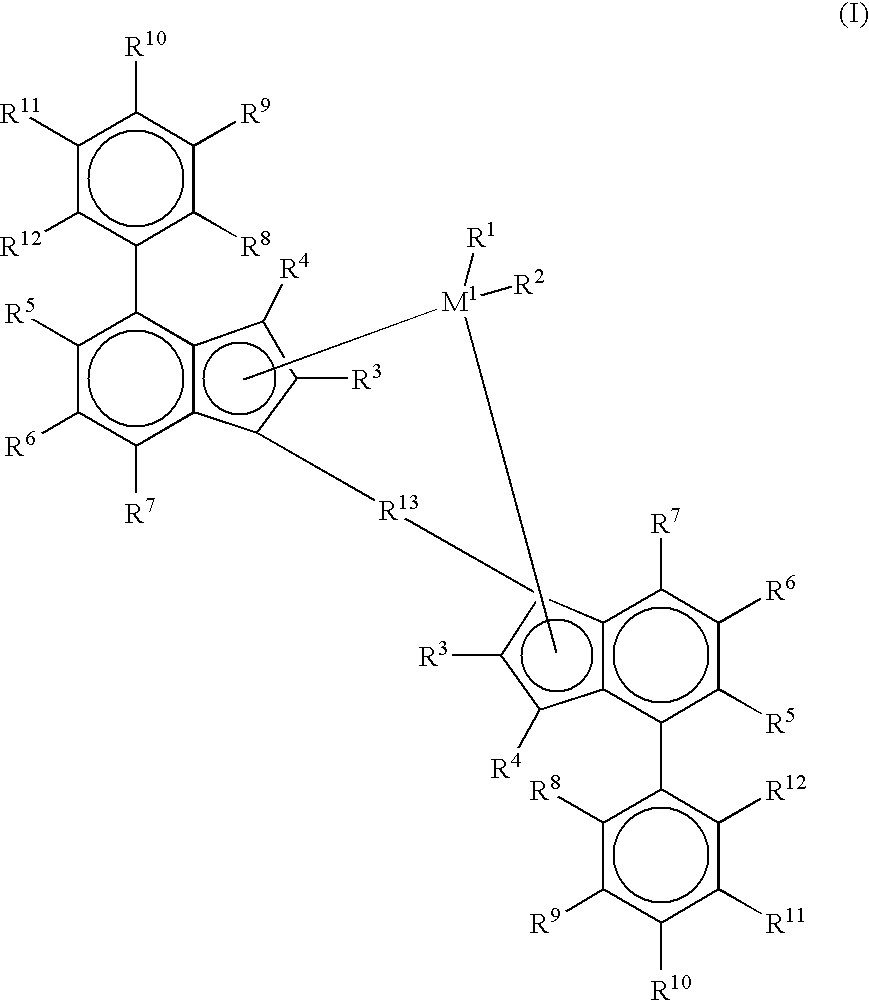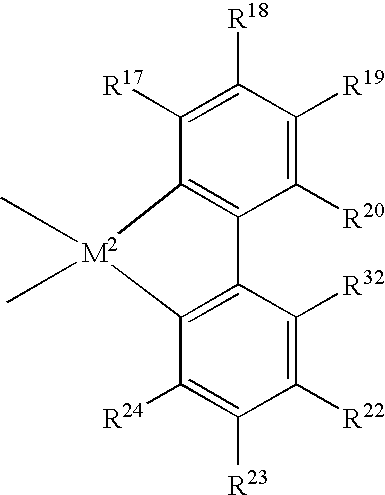Supercritical polymerization process and polymers produced therefrom
a supercritical polymerization and polymerization technology, applied in the direction of bulk chemical production, etc., can solve the problems of poor bubble formation in extrusion foam materials, low draw-down ratio in extrusion coating, and poor melt strength of polypropylenes
- Summary
- Abstract
- Description
- Claims
- Application Information
AI Technical Summary
Benefits of technology
Problems solved by technology
Method used
Image
Examples
example 1
[0824]In the following example, various samples of polypropylene were formed using two different metallocene catalysts at similar polymerization conditions. The properties of the samples are reflected in Table 1.
[0825]The results in Table 1 demonstrate the dramatically superior results that were obtained using the indenyl metallocene having substitutions at the 2- and 4-positions, as opposed to using an indenyl metallocene that was unsubstituted at the 4-position. Specifically, the activities of the catalysts used in forming Samples 3 and 4 were almost ten times as high as the activities of the catalysts used in forming Samples 1 and 2. Also, the results show the further improvement in catalyst activity due to conducting polymerization under supercritical conditions (Sample 4) in comparison with polymerization under subcritical conditions (Sample 3). Also noteworthy was the fact that the supercritical conditions did not cause any significant deterioration of melting point Tm.
[0826]S...
example 2
[0829]In the following example, various samples of polypropylene were formed using different polymerization conditions. The properties of the samples are reflected in Table 2.
[0830]Identical samples of polypropylene were prepared from 1000 ml of propylene and dimethylsilylbis(2-methyl-4-phenyl-1-indenyl)zirconium dimethyl in combination with dimethylanilinium tetrakis (perfluorophenyl) boron activator (Catalyst E). High purity liquid propylene monomer (99.5%) was purchase from Matheson and further purified by passing the propylene monomer through a mole sieve column commercially available from Matheson, Texas and an oxygen removal column commercially available from Labclear, California.
[0831]Each polymerization was conducted separately in a batch reactor with the stirrer set at 800 rpm for 60 min. The propylene was added in two intervals. First, 800 ml of propylene at room temperature was added to the reactor. The catalyst (10.04 wt % in white oil prepared using Davison 952 silica c...
PUM
| Property | Measurement | Unit |
|---|---|---|
| pressure | aaaaa | aaaaa |
| temperature | aaaaa | aaaaa |
| Tm | aaaaa | aaaaa |
Abstract
Description
Claims
Application Information
 Login to View More
Login to View More - R&D
- Intellectual Property
- Life Sciences
- Materials
- Tech Scout
- Unparalleled Data Quality
- Higher Quality Content
- 60% Fewer Hallucinations
Browse by: Latest US Patents, China's latest patents, Technical Efficacy Thesaurus, Application Domain, Technology Topic, Popular Technical Reports.
© 2025 PatSnap. All rights reserved.Legal|Privacy policy|Modern Slavery Act Transparency Statement|Sitemap|About US| Contact US: help@patsnap.com



